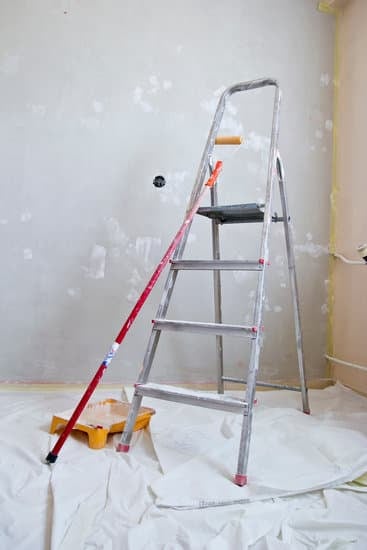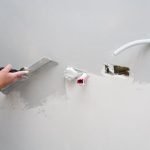Are home improvements elastic or inelastic? When considering the demand for home improvement products and services, it’s essential to understand the concept of elasticity. Elasticity refers to the responsiveness of the quantity demanded of a good or service to changes in price, income, or other factors. In this article, we will explore the concept of elasticity in the context of home improvements and its implications for homeowners and businesses.
The elasticity of demand for home improvements plays a crucial role in shaping market dynamics and consumer behavior within the housing industry. Understanding whether home improvements are elastic or inelastic can provide valuable insights into how consumers respond to changes in prices, incomes, and other relevant factors. By delving into this topic, we can gain a deeper understanding of the factors influencing demand for home improvement products and services.
In this article, we will delve into various aspects related to the elasticity of home improvements. We will discuss the concept of elasticity in relation to the housing market, analyze specific home improvement projects through case studies, explore the impact of government policies on demand elasticity, examine consumer behavior trends, and forecast future trends based on economic outlook and market data.
This comprehensive analysis aims to shed light on the complexities of demand elasticity within the realm of home improvements and provide valuable insights for homeowners and businesses alike.
Elasticity of Demand in Home Improvements
Home improvements can be considered as an elastic demand, meaning that the demand for these products and services is sensitive to changes in price. When the price of home improvement projects increases, consumers may choose to delay or forego these upgrades, opting instead to focus on more essential expenses.
On the other hand, when prices decrease, consumers are more likely to invest in their homes, leading to an increase in demand. Understanding the concept of elasticity in the context of home improvements is crucial for homeowners and businesses operating within this industry.
Factors such as income, current market conditions, and homeowner preferences all play a significant role in determining the elasticity of demand for home improvements. High-income households may be less responsive to price changes and are more likely to proceed with renovation projects regardless of fluctuating costs.
Conversely, lower-income households may postpone or eliminate non-essential renovations when faced with higher prices. Additionally, homeowner preferences and trends within the housing market can also impact the elasticity of demand for home improvements.
In analyzing the elasticity of demand for home improvements within different economic scenarios, it becomes evident that specific projects have varying levels of responsiveness to price changes. For example:
- Basic maintenance tasks like roof repair or plumbing fixes are often deemed as necessities and therefore exhibit relatively inelastic demand.
- Optional cosmetic upgrades such as kitchen remodels or landscaping are typically more elastic due to being discretionary expenses.
- Energy-efficient enhancements like insulation or solar panel installations may showcase a mix of elastic and inelastic properties depending on government incentives and environmental awareness.
By understanding the concepts of elasticity within home improvements, homeowners and businesses can make informed decisions regarding pricing strategies, investment opportunities, and potential government interventions aimed at stimulating this sector.
Factors Affecting the Elasticity of Home Improvements
When discussing whether home improvements are elastic or inelastic, it is crucial to consider various factors that can impact the demand for these products and services. One of the key factors is income. Generally, as household income increases, homeowners are more likely to invest in home improvements such as renovations, additions, and upgrades. On the other hand, during economic downturns or periods of financial uncertainty, homeowners may postpone or scale back on their home improvement projects due to budget constraints.
Current market conditions also play a significant role in determining the elasticity of demand for home improvements. For example, when the housing market is booming and property values are rising, homeowners may be more inclined to invest in improving their homes to capitalize on potential resale value.
Conversely, in a stagnant or declining real estate market, demand for certain types of home improvements may decrease as homeowners are less motivated to invest in upgrades when selling their homes seems less profitable.
Another important factor that impacts the elasticity of home improvements is homeowner preferences. Different demographics have different preferences when it comes to home improvement projects. For instance, younger homeowners might be more interested in energy-efficient upgrades and modern design elements, while older homeowners might prioritize accessibility features and aging-in-place modifications. These varying preferences can influence which types of home improvements experience higher or lower elasticity based on the target market.
In essence, understanding how income levels, current market conditions, and homeowner preferences influence the demand for home improvements is essential for businesses operating in this industry. By analyzing these factors and their impact on elasticity, companies can tailor their marketing strategies and product offerings to effectively meet the evolving demands of homeowners across different economic environments.
| Factor | Impact on Elasticity |
|---|---|
| Income | Affluent households are more likely to invest in high-end home improvements |
| Current Market Conditions | Booming real estate markets may increase demand for upscale renovations |
| Homeowner Preferences | Different age groups have distinct priorities when it comes to home improvement projects |
Case Studies
When considering the elasticity of demand for home improvements, it is important to analyze specific case studies to understand how different economic scenarios can impact the decision-making process of homeowners. One key aspect to consider when analyzing the elasticity of home improvement projects is the nature of the project itself.
For example, major renovations such as kitchen remodels or bathroom upgrades may be more elastic in nature, as they are often considered discretionary expenses that can be postponed during tough economic times. On the other hand, essential repairs such as fixing a leaky roof or a faulty HVAC system may exhibit inelastic demand, as these are necessary for maintaining the habitability and value of a property.
In addition to the nature of the project, the current market conditions and homeowner preferences play a crucial role in determining the elasticity of demand for home improvements. During periods of economic downturn, homeowners may prioritize essential repairs over cosmetic upgrades, leading to a shift in demand elasticity for different types of projects.
Furthermore, homeowner preferences for sustainable and energy-efficient improvements can also affect demand elasticity, as these projects are often viewed as long-term investments rather than immediate needs.
Analyzing specific case studies within different economic scenarios can provide valuable insights into the factors that influence the elasticity of demand for home improvements. By examining real-world examples, researchers and industry professionals can better understand how consumer behavior and market conditions interact to shape the dynamics of the home improvement industry.
| Home Improvement Project | Economic Scenario | Elasticity |
|---|---|---|
| Kitchen Remodel | Recession | Elastic |
| Roof Repair | Boom Economy | Inelastic |
The Role of Government Policies
Government policies play a crucial role in shaping the demand for home improvements and influencing their elasticity. Various regulations and interventions implemented by the government can have a significant impact on the housing market and the willingness of homeowners to invest in home improvement projects. Some key factors to consider when exploring how government policies influence the elasticity of home improvements include:
- Subsidies and tax incentives: Governments often offer financial incentives to encourage homeowners to invest in energy-efficient upgrades or renovations. These subsidies can make certain improvements more affordable, thereby increasing the demand for these products and services.
- Building codes and regulations: Government-mandated building codes and regulations can affect the types of improvements that homeowners are required to undertake, such as safety upgrades or environmental standards. Compliance with these regulations may lead to an inelastic demand for specific home improvement products or services.
- Economic stimulus programs: During periods of economic downturn, governments may implement stimulus programs aimed at boosting consumer spending and stimulating the housing market. These programs can directly impact the elasticity of demand for home improvements by providing financial support or incentives for homeowners to undertake renovation projects.
As we examine how government interventions and regulations influence the elasticity of home improvements, it becomes clear that these external factors play a significant role in shaping consumer behavior and preferences within the housing market. By understanding the interplay between government policies and the demand for home improvements, businesses and policymakers can better anticipate market trends and tailor their strategies accordingly.
It is evident that government policies have a profound impact on the elasticity of demand for home improvement products and services. As such, it is crucial for businesses operating in this sector to closely monitor legislative changes and anticipate their potential effects on consumer behavior.
Additionally, homeowners should stay informed about available subsidies or incentives that could make certain improvements more affordable or beneficial in the long run. Ultimately, an understanding of how government interventions influence home improvement elasticity is essential for making informed decisions about investing in property upgrades.
Consumer Behavior and Home Improvements
Consumer behavior plays a crucial role in determining the elasticity of demand for home improvement products and services. The decision-making process of homeowners, their preferences, and attitudes towards spending on home improvements significantly impact the overall demand elasticity in this sector.
Psychological Factors
One of the key aspects influencing consumer behavior in home improvements is the psychological factor. Homeowners may perceive certain improvements as essential for their well-being, comfort, or status. For example, they may prioritize renovations that enhance the aesthetic appeal of their homes or those that improve energy efficiency. These perceived needs drive the demand for specific home improvement products and services, making them relatively inelastic.
Seasonal Trends and Consumer Spending
Another important factor affecting consumer behavior and elasticity in home improvements is seasonal trends and consumer spending patterns. During periods of economic uncertainty or when household budgets are tight, consumers may exhibit more price sensitivity and postpone non-essential improvement projects. On the other hand, during economic booms or favorable market conditions, consumers may be more willing to invest in larger-scale renovations regardless of price changes, indicating lower elasticity.
Marketing and Brand Influence
The influence of marketing strategies and brand image also affects consumer behavior and the elasticity of demand for home improvement products. Strong brand loyalty or preference for specific products can make consumers less responsive to price fluctuations, leading to a more inelastic demand. Conversely, effective marketing campaigns highlighting cost-effective solutions or innovative technologies can stimulate demand even if prices rise slightly due to increased perceived value.
Understanding these various aspects of consumer behavior is crucial for businesses operating in the home improvement industry. By analyzing consumer attitudes and spending patterns, companies can tailor their marketing strategies, product offerings, and pricing mechanisms to effectively respond to fluctuations in demand elasticity within this dynamic market.
Economic Outlook and Home Improvements
The economic outlook has a significant impact on the demand for home improvements. As the housing market fluctuates and economic conditions change, it is essential to analyze how these factors influence the elasticity of home improvements. By understanding the future trends and elasticity of home improvements, homeowners and businesses can make informed decisions about their investment in property enhancements.
Forecasting Future Trends
Economic forecasts play a crucial role in predicting the demand for home improvements. Factors such as interest rates, housing affordability, and consumer confidence are key indicators that can help forecast future trends in the housing market. For example, if interest rates are expected to remain low, homeowners are more likely to invest in remodeling projects or upgrades, leading to a higher elasticity of demand for home improvements.
Market Data Analysis
Analyzing market data allows us to understand current consumer behavior and preferences in relation to home improvements. By studying sales trends, popular renovation projects, and regional variations in demand for home improvement services, we can assess the elasticity of demand within specific market segments. This analysis provides valuable insights into how economic conditions affect consumer spending on home improvements and helps businesses tailor their offerings to meet evolving demands.
Impact on Homeowners and Businesses
Understanding the future trends and elasticity of home improvements is beneficial for both homeowners and businesses. Homeowners can make strategic decisions about property investments based on economic forecasts, while businesses in the construction and renovation industry can adapt their services and marketing strategies to align with changing consumer preferences. By staying informed about economic outlooks and market data, stakeholders in the housing market can navigate fluctuations in demand for home improvements effectively.
Conclusion
In conclusion, the elasticity of home improvements has significant implications for both homeowners and businesses in the housing market. Understanding the concept of elasticity is crucial for making informed decisions regarding investment in property upgrades and renovations. As discussed in this article, various factors such as income levels, market conditions, and consumer behavior all play a role in determining the elasticity of demand for home improvement products and services.
For homeowners, recognizing the elasticity of home improvements can help in prioritizing renovation projects based on their potential impact on property value and overall return on investment. By considering factors that affect demand elasticity, such as consumer preferences and economic outlook, homeowners can make strategic choices that maximize the value of their properties.
Similarly, businesses operating in the home improvement industry can benefit from understanding demand elasticity to tailor their offerings to meet consumer needs effectively. Analyzing case studies and market data to assess how different economic scenarios influence consumer behavior can guide businesses in developing products and services that are responsive to changing demands.
Moreover, government policies also play a crucial role in shaping the elasticity of home improvements, and businesses need to stay informed about regulatory changes that could impact their operations.
In summary, whether home improvements are considered elastic or inelastic depends on a variety of factors that influence demand within the housing market. By recognizing these influences, homeowners and businesses can make more informed decisions when it comes to property upgrades and investments, ultimately leading to better outcomes for all stakeholders involved.
Frequently Asked Questions
Is a House Elastic or Inelastic?
Whether a house is considered elastic or inelastic depends on the specific context. In terms of housing as a whole, it can be considered relatively inelastic because demand for housing generally does not fluctuate significantly with changes in price.
What Is an Example of an Elastic Demand at Home?
An example of an elastic demand at home could be luxury items such as high-end electronics or designer furniture. If the price of these items increases, consumers may choose to delay or forego their purchase altogether, demonstrating elasticity in demand.
Are Household Appliances Inelastic?
Household appliances are often considered inelastic goods. This is because they are typically essential for daily living and do not have close substitutes. As a result, the demand for household appliances tends to be less responsive to price changes compared to luxury items or non-essential goods.

I’m thrilled to have you here as a part of the Remodeling Top community. This is where my journey as an architect and remodeling enthusiast intersects with your passion for transforming houses into dream homes.





